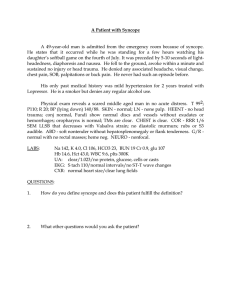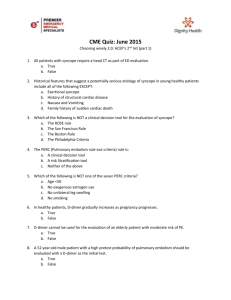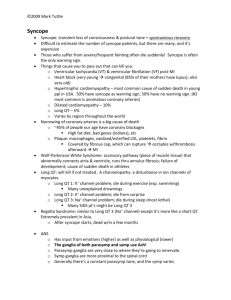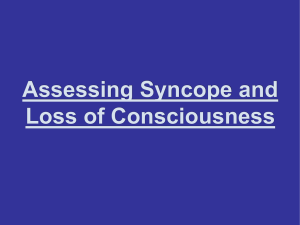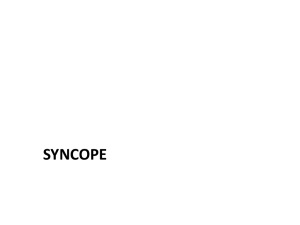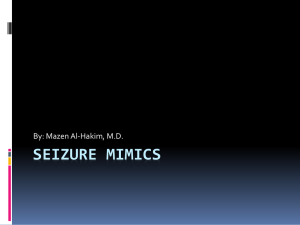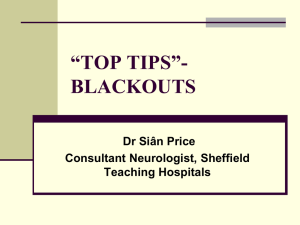Syncope Vs seizure
advertisement
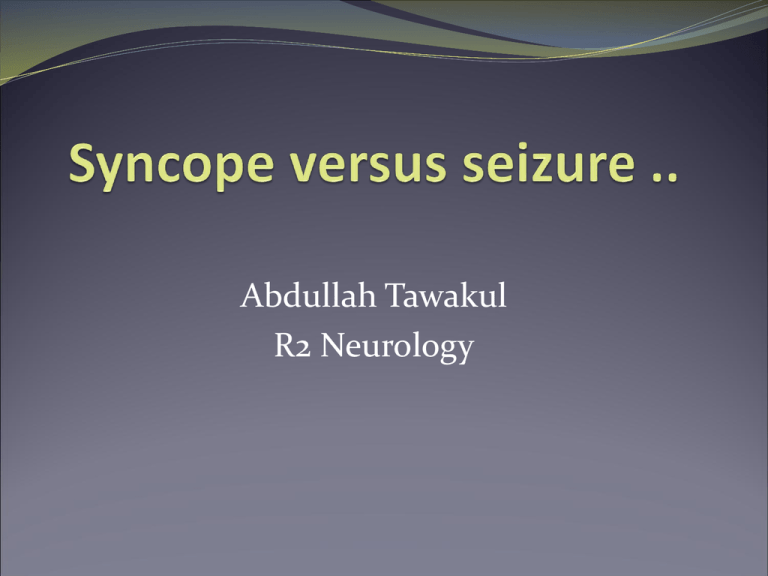
Abdullah Tawakul R2 Neurology Introduction The assessment of a patient with a transient • loss of consciousness can be difficult. These patients fall into two groups: those with seizures, which embrace both epileptic and non-epileptic events. Introduction And those with syncope, defined as loss of consciousness and postural tone caused by cerebral hypoperfusion with spontaneous recovery. Introduction There can also be the confounding factor of convulsive syncope, which is a seizure-like reaction resulting from global cerebral hypoperfusion; this happens in around 12% of patients presenting with syncope. Introduction On presentation, vital clues are commonly missing because patients may have amnesia and a witness account might not be available, and even after multiple investigations a diagnosis may still be not be possible. Seizure DDx: Syncope DDx: Clinical approach.. It’s all in the history Clinical history and examination Historical features are very essential in distinguishing syncope from seizures, and have been proposed as a scoring scheme (table) by Sheldon and colleagues. This point score is a useful bedside tool, is based on symptoms only, and diagnoses seizures with 94% sensitivity and specificity. Events prior to the attack Events prior to the attack Event at the onset of the attack Event during the attack Event during the attack Events after the attack Antecedent disorders Clinical exam: Vital signs ..orthostasis Neurological exam ?? CVS exam . OB It’s tricky ..lets do MRI or PET scan ? Investigations Management of the patients should not be guided by the specialty under which they were admitted—eg, a patient admitted under neurology only having neurological investigations. One study of clinical-decision making has shown that internists tended toward a broader diagnostic assessment than their cardiology colleague. Investigations Basic laboratory investigations should be done to exclude anaemia, infection, electrolyte disturbances, or renal and liver dysfunction. EKG (cardiac work up) D dimer ..VQ scan Investigations EEG and telemetry : Clinical suspicion , abnormal movements , funny turns. In one British study of electroencephalogram use in a district hospital, 56% of orders were considered to be inappropriate, and only 16% influenced management. Investigations Neuroimaging : reserved for patients presenting with a suspected first unprovoked seizure or with a focal neurological deficit. References Historical criteria that distinguish syncope from seizures.. Sheldon et.al. Seizure versus syncope .. McKeon et.al. Falls, faints, fits and funny turns.. Thijs et.al. Making the diagnosis in patients with blackouts: it’s all in the history.. Plug et.al
